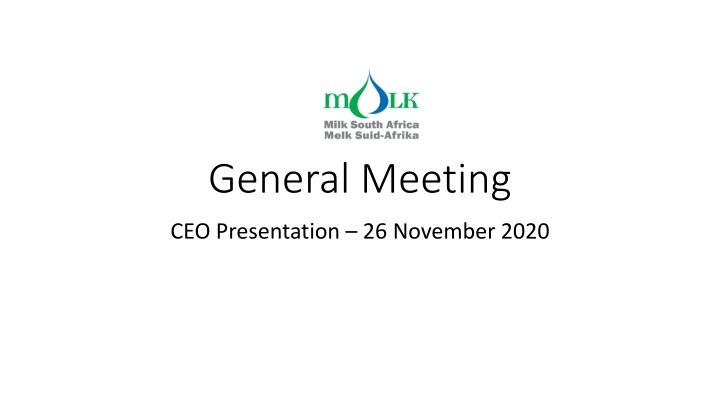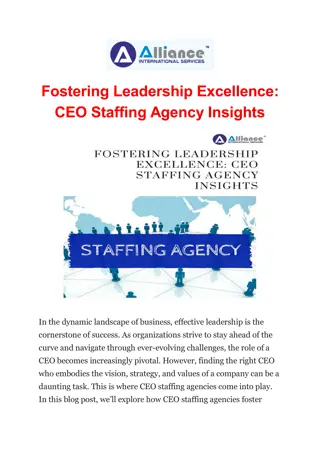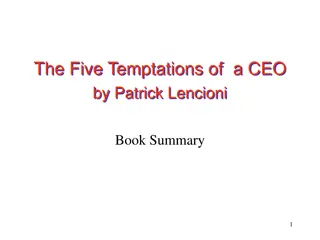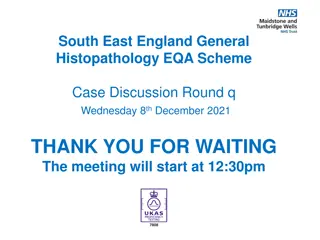
South Africa Economic Overview: Challenges and Opportunities
Explore the economic landscape of South Africa with insights on GDP contraction, unemployment rates, household debt, retail sales trends, and key financial indicators. Discover the impacts of the pandemic on the country's economic performance and key developments in various sectors.
Download Presentation

Please find below an Image/Link to download the presentation.
The content on the website is provided AS IS for your information and personal use only. It may not be sold, licensed, or shared on other websites without obtaining consent from the author. If you encounter any issues during the download, it is possible that the publisher has removed the file from their server.
You are allowed to download the files provided on this website for personal or commercial use, subject to the condition that they are used lawfully. All files are the property of their respective owners.
The content on the website is provided AS IS for your information and personal use only. It may not be sold, licensed, or shared on other websites without obtaining consent from the author.
E N D
Presentation Transcript
General Meeting CEO Presentation 26 November 2020
South Africa GDP Annual Growth Rate South Africa GDP Annual Growth Rate Source: Source: Trading Trading Economics.com Economics.com/ Statistics SA / Statistics SA The South African GDP contracted 17.1% year-on- year in the second quarter of 2020, following a revised 0.1% growth in the previous period. The strong economic downturn happened amid the impact of one of the strictest coronavirus lockdowns in the world which forced all non- essential activities to shut down operations.
Unemployment and Household debt Unemployment and Household debt SA Unemployment rate: 30,8% in Aug 2020 vs 26,7% in Jan 2018 Expanded definition (including people who stopped looking for work) = 43,1% in Aug 2020. SA Household debt to net income: 72,8% in 2019 vs 71,9 in 2018
South Africa Retail Sales YoY South Africa Retail Sales YoY
Milk SA structures and contractual relationships Milk SA structures and contractual relationships
Changes at the Milk SA Office Changes at the Milk SA Office
Levy income vs Budgeted income Jan 2018 to Oct 2020 Levy income vs Budgeted income Jan 2018 to Oct 2020 Budget = 146 400 000 Income = 156 400 000
Levy debtors Levy debtors Debtors days: < 4% 7 Role-players = 80% of debt 67 Role-players = 20% of debt Oct-18 Oct-19 Oct-20 Total debt 810 005 692 289 714 531
Administration: Other Administration: Other External audit for 2019 was finalized during the lockdown (April & May) and a clean audit has been achieved again. Internal audits were conducted for: Human Resources Administration of the Statutory Measures Information Technology SA National Committee of the IDF Inspections amongst role-players continued: Verification of statutory returns. Legal action continued with good results.
Unprocessed (raw) milk used for manufacturing / Unprocessed (raw) milk used for manufacturing / processing of dairy products processing of dairy products
Agricultural and Agro Agricultural and Agro- -processing Master Plan processing Master Plan Since Jan 2020, Milk SA has been involved to create a Master Plan for Agriculture and Agro-Processing. Milk SA s team was Nico Fouche, Alwyn Kraamwinkel, Dr Van Dijk, Godfrey Rathogwa and Jompie Burger. The AAMP is part of the President s investment initiatives, also with the aim to create jobs. The team provided voluminous input in a number of meetings with BPAP and the NAMC with the main message that the industry expects basic service delivery and public safety from Government. The NAMC promised to include a Dairy Chapter but nothing has been seen yet. The CEO was also involved in a Technical task Team and Symposiums held by the President and Minister Didiza. In October 2020, industries were given 3 days to comment on a DALRRD / NAMC document, sketching the way forward. This was rejected by almost all industries, mainly because of the structures which were loaded with too many irrelevant stakeholders to make the Master Plan inclusive . Stakeholders included ARC, all 9 HOD s of Prov Agric, 5 labour unions, Oxfam, 4 Civil Society organizations, 5 Emerging Business organizations, AgBiz, Agri SA and TAU.
In conclusion In conclusion Government fails to provide an investment friendly environment. Government initiatives to find solutions for agriculture + agro-processing only deliver plans. Milk SA is thankful to government and NAMC officials who take hands with Milk SA and other industry bodies. Milk SA is thankful for the MAP Act and uses it optimally. The Office of Milk SA has proven itself to improve on its efficiency i.t.o. administration of the measures and otherwise. The Board of Directors maintains its firm grip on Corporate Governance and is presented with reports from all its committees. Milk SA pays tribute to the milk producers and processors for their persistent drive and innovation, especially during Covid and the economic climate.






















